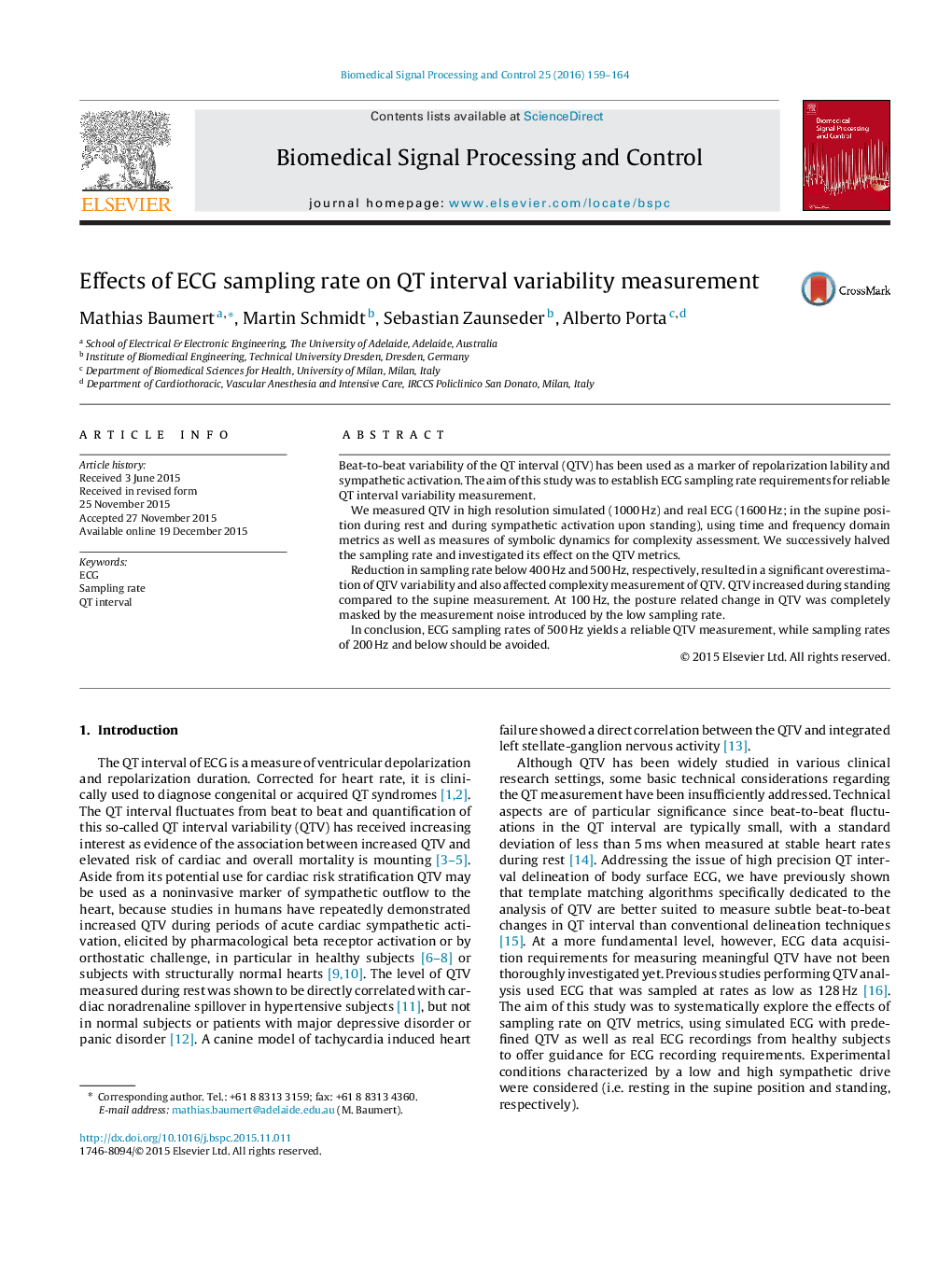| کد مقاله | کد نشریه | سال انتشار | مقاله انگلیسی | نسخه تمام متن |
|---|---|---|---|---|
| 557563 | 1451655 | 2016 | 6 صفحه PDF | دانلود رایگان |
• Beat-to-beat variability of the QT interval on surface ECG is a marker of repolarization lability.
• As QT variability is typically very small, ECG acquisition parameters are important.
• QT variability can be reliability measured when the sampling rate is 500 Hz or above.
Beat-to-beat variability of the QT interval (QTV) has been used as a marker of repolarization lability and sympathetic activation. The aim of this study was to establish ECG sampling rate requirements for reliable QT interval variability measurement.We measured QTV in high resolution simulated (1000 Hz) and real ECG (1600 Hz; in the supine position during rest and during sympathetic activation upon standing), using time and frequency domain metrics as well as measures of symbolic dynamics for complexity assessment. We successively halved the sampling rate and investigated its effect on the QTV metrics.Reduction in sampling rate below 400 Hz and 500 Hz, respectively, resulted in a significant overestimation of QTV variability and also affected complexity measurement of QTV. QTV increased during standing compared to the supine measurement. At 100 Hz, the posture related change in QTV was completely masked by the measurement noise introduced by the low sampling rate.In conclusion, ECG sampling rates of 500 Hz yields a reliable QTV measurement, while sampling rates of 200 Hz and below should be avoided.
Journal: Biomedical Signal Processing and Control - Volume 25, March 2016, Pages 159–164
